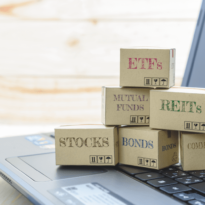As markets enter 2023, investors should not miss the opportunity to lock-in far more attractive income streams, according to Jacob Vijverberg, Multi-Asset Investment manager at Aegon Asset Management.
Vijverberg says the that despite uncertainty continuing to play on investors’ minds, the current environment is perfectly poised for those looking to lock-in strong income returns.
“The sharp rise in yields we saw over 2022 in both fixed income and equities implies that investors can now lock-in attractive long-term income,” he says. “Despite significant uncertainty surrounding the inflation and the energy crisis, this is an opportunity that shouldn’t be missed.
“Rising rates have led to investment losses on almost all asset classes, with long duration assets fairing the worst. A restrictive monetary policy combined with an energy crisis will likely lead to a sharp slowdown in world growth. However, we think investors seeking income should welcome this change.”
For instance, he points out that if investors bought sovereign bonds in 2021, they were likely to lock-in deeply negative real rates, which guaranteed a large loss in inflation-adjusted terms. “Currently, however, real yields on sovereigns average around zero percent, which at least maintains investors’ purchasing power.”
Thanks to higher rates, investors are now being rewarded much better for taking on risk, says Vijverberg.
With yields moving much higher, anyone looking for income has significantly better options than a year ago, even with the added risk of a looming global recession.
“Investors are now much better rewarded for taking risk,” he says. “Yields on European high yield bonds dipped below 3% in 2021, which basically guaranteed a negative real return in even the best economic scenario.
“And unfortunately, the economic environment proved to be far from the best possible. But yields on European high yield are now approximately 7.5%, which implies investors are likely to get a decent mid-single digit return even in a recession.
“Equities have an additional advantage over fixed income, given they have been able to price through inflation,” he says. “Typically, they raise prices in response to input-cost inflation to restore margins. Clearly, this process can take several years, but it has to be taken into account when comparing equity yields with fixed income assets.”
Vijverberg says valuation is, especially over the medium and long-term, the best variable to predict investment returns. On these measures, he says things are looking brighter.
“Unfortunately, however, not everything looks rosy,” he cautions. “The depth of the economic slowdown and the extent to which central banks raise rates, will, in the shorter-term, determine returns on asset classes. Therefore, attention needs to be paid to each investment and whether it can withstand a recessionary environment.
“For companies, low leverage and low earnings cyclicality are important metrics. Also, sectors which benefit from structurally growing demand, like renewable energy or semiconductors are well placed.
“Overall, investors will need to maintain a well-diversified portfolio to limit exposure to any one factor or asset class. Through adhering to the basics, though, 2023 could be a good year for income investors and has the ingredients for a potentially strong year in returns.”



































